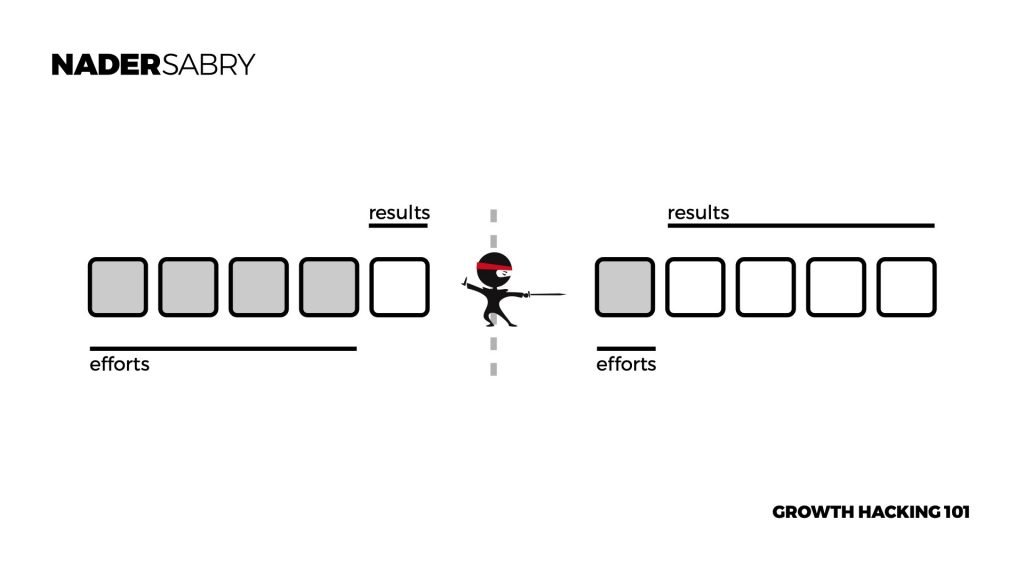How to Effectively Structure a Growth Hacking Team
How to Effectively Structure a Growth Hacking Team – learn how to do this well and how to sustain a strong growth hacking team
How do you set up your growth hacking team? How many team members should you have? What skills should they bring to the table?
How are they supposed to interact with each other? These are just some of the questions that need to be answered when setting up your very own growth hacking team and in this article,
I’ll be going over an effective structure that not only gives you incredible results but also helps facilitate company growth at an exponential rate.
Before we get started, some helpful background to growth hacking
- What is growth hacking?
- Why is growth hacking important?
- How does growth hacking work?
- When should growth hacking be used?
- How to develop the skills to hack growth?
What is growth hacking?
Growth hackers explore new growth opportunities systematically at any point of the customer journey, from awareness through the market to brand ambassadors by optimizing the product. In terms of technology, it originated in 2010 when Sean Ellis coined it is mostly used by startups because of its limited budgets and limited resources.
Since then, it has shown an incredible increase in popularization among large-scale and traditional businesses. Companies like Shopify like Uber has their own head of growth and dedicated growth team. The growth hacker is based on an experiment-based, data-driven.

There is a wide range of definitions; in the Book Ready Set Growth, Hack growth hacking is defined at a strategic level as a process that achieved disproportional results.
This is best understood through an example of efforts v.s results. This is when less effort is exerted to get dispositional results. Growth hacking works that simple.
Not just in top tech companies run by silicon valley’s top entrepreneur making hundreds of millions of dollars daily, shaping silicon valley’s culture, and defining the new silicon valley entrepreneur.
As many growth professionals leave the traditional marketers behind, a new breed of growth hackers is emerging.
How does growth hacking work?
As defined in the Ready Set Growth Hack, growth hacking is a systematic process governed by the growth cycle concept. the growth cycle is a three-phase process, where it starts with a growth problem, moves into experimentation then into scaling.
Based on this process, once a growth problem is well defined through a specific process, it would then be up to the growth hacker to find solutions. Solutions are found vis structured and systematic experimentations.

Using growth analytics for data-driven growth decisions, growth hackers can quickly discover what works and doesn’t before investing a penny in more development. This is governed by a process called growth thinking which is a design methodology used for growth hacking.
Break the rules – growth hacking
The hidden weapons of growth hacking are simple and simple: Be a rule-breaker. The job requires you to think outside the box and unleash your creativity. A growth hack involves having the right mindset on growth.
This job requires creativity and ad-hoc experiment with hypotheses and high potential. Be creative growth Hacks won’t come with any rules. Rule-breaking is at the core of growth thinking and how the growth hacking process works.
- if a rule is working, find a better way to break I
- If a rule isn’t working, break it with a better one
- If a rule is about to fail, let it and then break it
- If a rule is about to have success, break that too
The growth hacking mindset or growth mindset is a very different way of working than that of other professions. Their goal is the north star metric which is basically a growth goal and only a growth goal.
subscribe for updates
What Is A Growth Hacking Team?
The best way to approach optimizing your growth hacking team is by creating separate teams whose sole function is to support and grow key product features.
Too often, leaders at early-stage companies will struggle with who gets tasked with what when all hands are needed on deck for everything, which leads to some people doing three or four different jobs at once.
This approach can work at larger companies that have lots of resources and cross-functional teams, but it’s not ideal for smaller firms without dedicated departments such as customer service or product development.
These kinds of firms need more flexible approaches that allow everyone on board to wear multiple hats without spending too much time switching gears between tasks.
How to structure the growth hacking team
A growth team is usually made up of one product owner, one data analyst, and multiple developers.
This structure works well because each member is uniquely talented and can therefore focus on his or her strength.
That said, some organizations (especially smaller ones) may find it difficult to hire all three team members.
Because of that, here are three different ways you can effectively structure your growth hacking team without having all roles represented
Top growth hacking skills needed in a growth hacking team
Understanding user behavior. Knowing how people use your product can help with suggesting new features, products, and services you might be able to sell and lead you to where your growth opportunities are. Understanding your users’ needs is also important when it comes to product development. Business development skills.
When you’re able to successfully identify new customers or markets for existing ones, it’s time for business development—that’s when sales and marketing need to enter the picture.
Analytical mindset. Growth hackers should have an analytical mindset because it helps them figure out what works best in their industry from analyzing data gathered from different sources on user preferences and behaviors, competition analysis, etcetera.
The Most Common Mistakes When Structuring The Growth Hacking Team
It’s all in how you choose to structure your growth hacking team and whom exactly you hire. It’s about who does what, and where are they located?
Here are some best practices that you should follow when creating your own growth hacking team:
Avoid hiring a jack of all trades – because it would be very hard for these individuals to prioritize what they should do next.
Also, it is advisable not to hire a master of none either as they might take too long before becoming good at something.
Instead, concentrate on hiring people with expertise in 1 thing and then other 2-3 related things (e.g. Growth strategy, Marketing, and coding)
Why Should Smaller Companies Use This Approach?
If you’re in charge of organizing a growth hacking team, or considering using a combination of contractors and full-time staffers to support your efforts, there are pros and cons that come with each approach.
Smaller companies may find it easier to recruit individuals on an as-needed basis, which can help minimize overhead costs when they aren’t all actively engaged in projects or campaigns.
On other hand, there are benefits to building out a dedicated full-time staff who work exclusively on growing traffic and revenue.
How do startups benefit from growth hacking?
Startups don’t have the money, time, or resources that many established companies have. Without those advantages, they need to be creative in order to compete effectively. Growth hacking is one way they can level that playing field.
What is growth hacking? Growth hacking leverages social media, content marketing, and other avenues that establish good business practices, but also figure out clever ways of leveraging these channels as much as possible for an exponential boost in return on investment (ROI).
To do so successfully requires careful planning and execution, so it’s best done by creating a growth team devoted exclusively to growth-hacking activities. However, that structure needs special consideration if it’s going to work effectively.
How To Build The Virtual Growth Hacker Function
From Positioning To Recruiting – This is a guest post by Swati Chaturvedi, Principal Analyst at Forrester on how to structure and resource your growth hacking team.
The pace of innovation has given rise to some interesting functions in the technology and marketing departments of enterprises. One such trend is that of growth teams or growth hackers – groups that are uniquely tasked with boosting customer acquisition and engagement through non-conventional means like content creation, A/B testing, digital advertising etc.
It is one thing for startups and smaller companies (especially those funded by VCs) to have dedicated individuals who work on growth, but it can be quite another for larger enterprises.
Building And Sustaining The Virtual Growth Hacker Function
Now that you have your growth hacker in place, it’s time to figure out how you will support them and their team. In many cases, a growth hacker is a full-time position within an organization.
However, if you’re going down that path, be prepared for some serious dedication from your growth hacker (and by extension, yourself).
When I say full-time in most cases I mean 80+ hours per week. If your firm can’t accommodate such an arrangement with real capital and/or appropriate technology investment then don’t hire one at all.
subscribe for updates
Final Thoughts On Growth Hacker And Its Benefits
One of my favorite growth hackers, Andrew Chen, wrote in his famous piece: The Growth Hacker Is The New VP Marketing A growth hacker is a person whose true north is growth. Everything they do is scrutinized by its potential impact on scalable growth.
All great companies are looking for ways to grow. Some see organic growth as the only option. Some build products with brute force advertising strategies using ads like Google Adwords or Facebook ads and some resort to guerilla marketing tactics that rely heavily on word-of-mouth and PR coverage.
One thing all successful startups have in common is exceptional customer service. Nobody wants to be treated badly when they spend their hard-earned money on your product or service.
